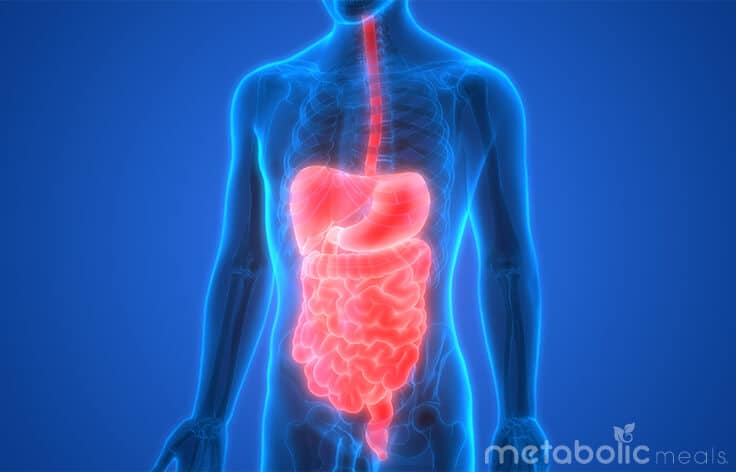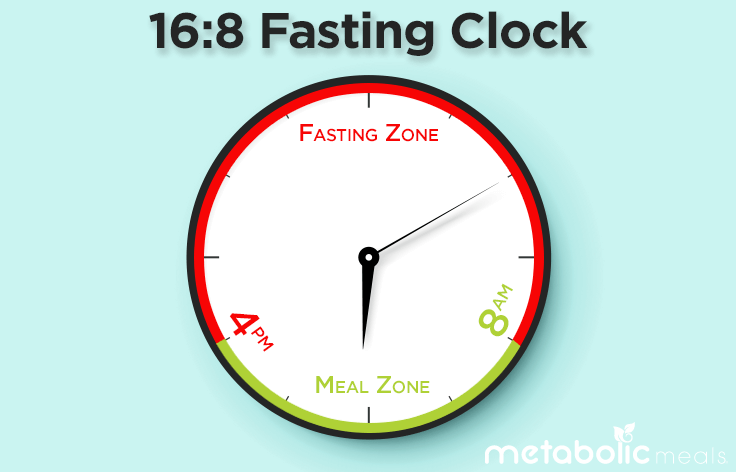If you’re looking for a way to change up your dieting habits, you might have run across the term “intermittent fasting” — but what does that actually mean?
Intermittent fasting (IF) means eating only within a certain time window every day, typically ranging from eight to 12 hours per day. The ultimate goal is to train your body to function more efficiently.
Your body’s circadian rhythm plays a significant part in nearly every cellular process. You might already know that this rhythm is influenced by light: “early to bed, early to rise.” But food also has a significant peripheral impact on the rhythm, regardless of lighting conditions.
For example, digestion is such a demanding metabolic process that it can impact the building of neurotransmitters, the repair of your immune system, the oxidation of fatty acid, and even the healing of damaged tissues. By limiting the amount of time your body has to work on digestion, you give it more time to rebuild itself.
The Health Benefits of Intermittent Fasting
Giving your body time for necessary functions besides digestion is one of the main benefits of intermittent fasting. Another is the reduction of systemic inflammation and improved blood sugar control, both of which strongly support anti-aging, weight management, and chronic disease prevention.
During the 12 to 16 hours of fasting, your body uses up glycogen. It takes about 10 to 14 hours to deplete the liver’s glycogen stores, at which point your body will start breaking down fat and turning it into ketone bodies for energy.

Studies on the effects of intermittent fasting on animals have shown that time-restricted eating can improve several health factors, including heart problems, fat and lean muscle mass, glucose tolerance, lipid profile, inflammation, and mitochondrial volume.
Further studies have shown that eating within an 11- to 12-hour window improves metabolic flexibility, which is your body’s ability to use both carbs and fats for energy. It can also improve sleep and weight loss.
The benefits of IF relate to each person’s specific health and wellness needs. But in general, its purpose is to train your body to perform all its essential functions with as much dedication and efficiency as it puts into digesting your food.
How to Make Intermittent Fasting Work
It’s important to note that while most people can benefit from a well-implemented IF plan, special consideration should be made for pregnant women, young children and adolescents, diabetics, immune-suppressed individuals, or anyone experiencing hormonal imbalance.
For everyone else, however, the key to making an IF plan work is avoiding common mistakes that negatively impact your health. One of the most common mistakes is eating what you want, not what you need. Common sense still applies, and doubling down on the dollar menu will negate any benefits IF provides. Instead, focus on eating meals filled with healthy fats, proteins, and fibrous vegetables.

Another mistake is failing to account for your necessary calorie intake. Insufficient calories can slow your metabolic rate, causing your body to sacrifice muscle mass and leading to nutrient deficiencies. However, increasing calories too much could lead to an increase in inflammatory C-reactive protein. It’s important to know the appropriate calories and macronutrient ratios you need to properly sustain your energy.
Aside from avoiding these mistakes and ensuring your meals provide the fuel your body needs, intermittent fasting can be customized to your specific preferences. For example, the most common method of IF is known as 16:8, meaning 16 hours of fasting and an 8-hour feeding window.

To closer match your natural circadian rhythm, you might prefer to start your first meal in the morning and finish the last one in the afternoon, so your eating period could be from 8 a.m. to 4 p.m. Others might prefer 10 a.m. to 6 p.m. so they can sit down for a family dinner. Personally, I like to exercise later in the day, so I keep my eating hours between 12 p.m. and 8 p.m.
While times can vary, the key to every successful IF plan is the meals that you choose to consume. To help you get started, I’ve detailed an excellent sample of what a day of intermittent fasting may look like for both an a.m. and p.m. schedule:
A.M. Meal Schedule:
- 8 a.m. — 4-ounce flank steak, two scrambled eggs, and 1/4 cup of blueberries
- 10 a.m. — 6-ounce chicken breast and one cup of leafy greens with 2 tablespoons of extra virgin olive oil
- 11:30 a.m. — exercise
- 12:30 p.m. — 40-gram whey protein shake
- 2 p.m. — 6 ounces sliced turkey and one medium sweet potato with 1 tablespoon grass-fed butter
- 4 p.m. — 6 ounces mahi-mahi, 3/4 cup of jasmine rice, and half an avocado
P.M. Meal Schedule:
- 12 p.m. — four free-range eggs and 1/2 cup of leafy greens cooked in coconut oil
- 2 p.m. — 6-ounce bison burger patty with one cup of butternut squash
- 3:30 p.m. — exercise
- 4:30 p.m. — 40-gram whey protein shake
- 6 p.m. — 6 ounces rotisserie chicken, one cup of black beans, and 1/4 cup of cashews
- 8 p.m. — 6 ounces smoked salmon, side salad with 1 tablespoon of extra virgin olive oil, and one cup of quinoa pilaf
Now that a solid amount of research has proven the benefits of IF, it’s becoming clear that the lifestyle could fit a broad range of people. If you’re concerned about timing and preparing your meals correctly, try subscribing to a meal delivery service or blocking out time to cook meals ahead on weekends. When implemented properly, a good IF plan provides all the energy your body needs while also giving it time to rest, recover, repair, and rebuild itself successfully, which will improve your overall health.






